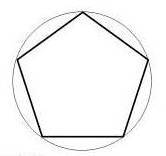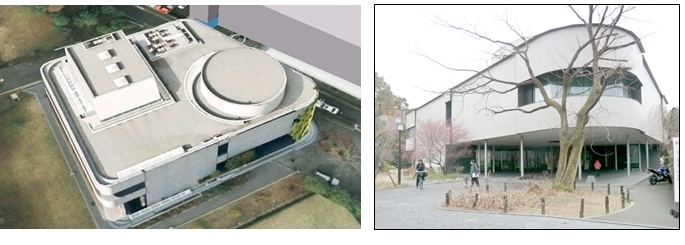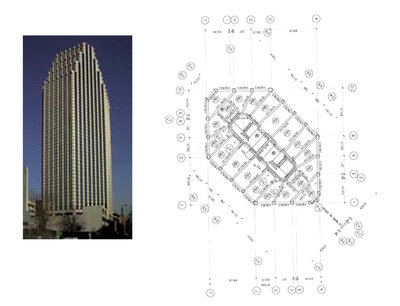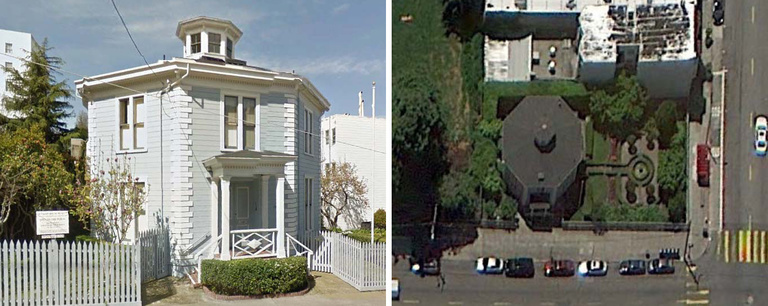The shape of the building plan is approximately polygonal, with only minor variations from a polygonal shape. Polygon is a plane figure bounded by a finite number of straight lines (called sides), which connect up and form a closed shape. This term refers to shapes that can be approximated as regular convex polygons (see the drawing below for illustration). Polygon is regular when its side are of equal length. The following polygonal shapes are included in this category: trapezoid (4 sides), pentagon (5 sides), hexagon (6 sides), heptagon (7 sides), octagon (8 sides), etc. Note that square and triangle are also polygons, however they have been identified as separate items in the table.

Any line drawn through a regular convex polygon meets its boundary exactly twice - the example shows a pentagonal shape (adapted from Salix Alba for English Wikipedia)

A building with trapezoidal plan, Shiraikan Building, Kyoto University, Japan (left: Map data ©2013 Google, ZENRIN; right: C. Scawthorn)

A reinforced concrete high-rise building in Chile with hexagonal plan shape (O. Moroni, C. Gomez, and M. Astroza, Chile, World Housing Encyclopedia Report 6)

The Octagon House in San Francisco, California has octagonal plan shape (Map data ©2013 Google, DigitalGlobe, U.S. Geological Survey, USDA)


